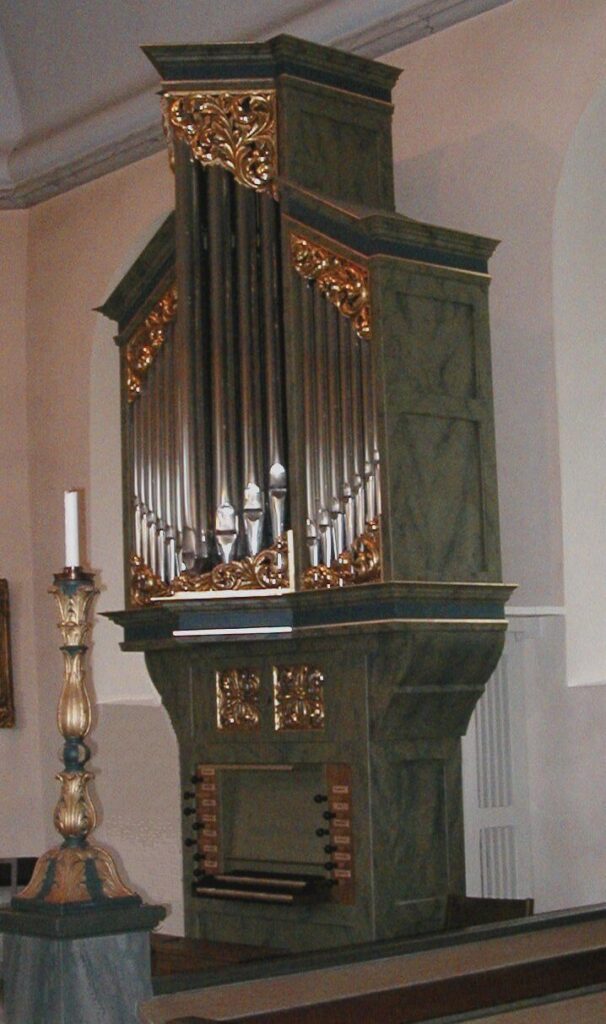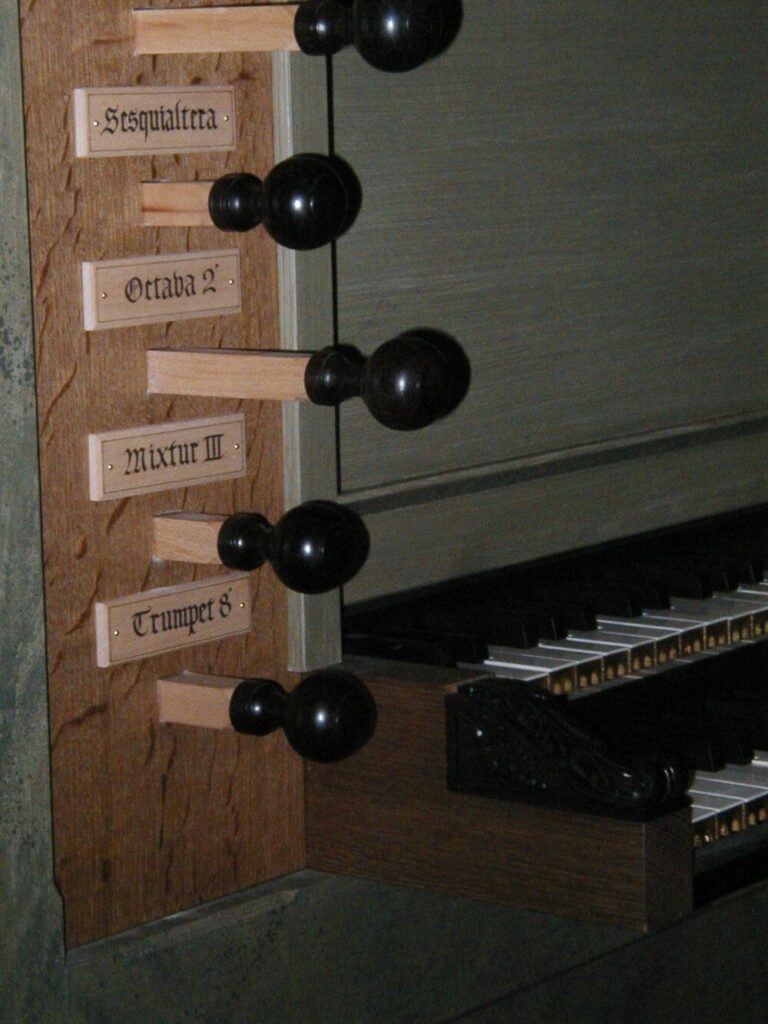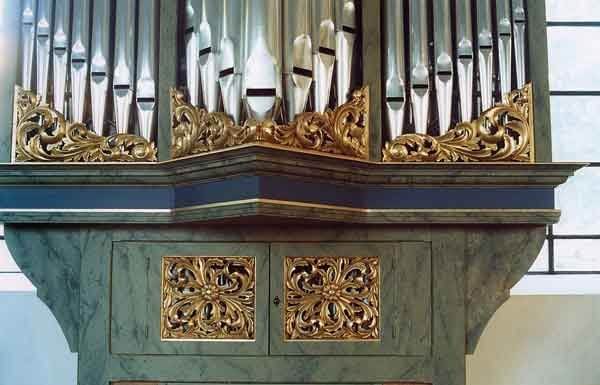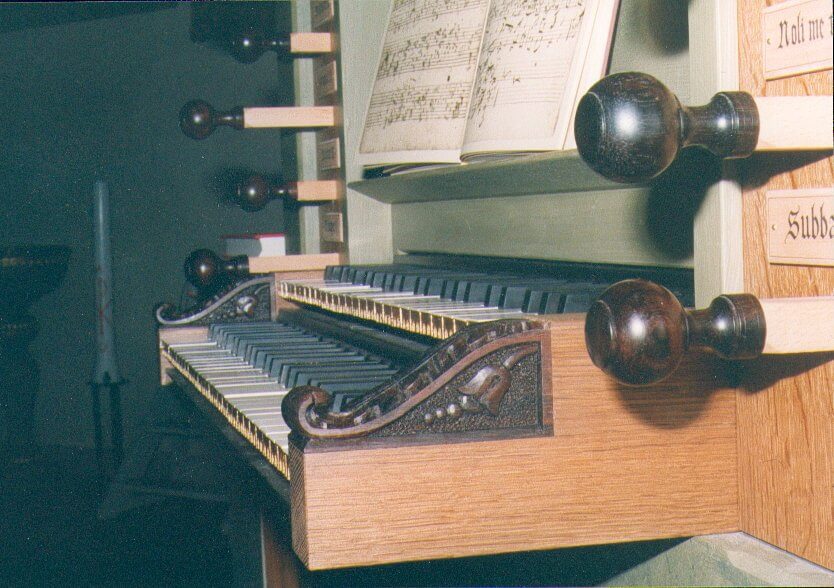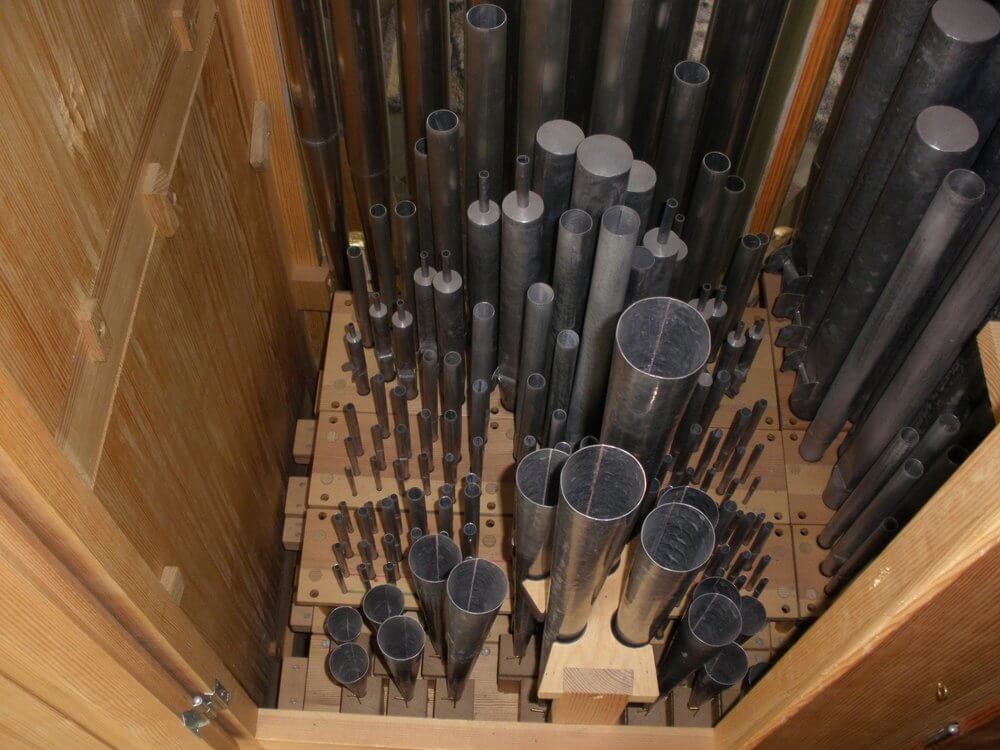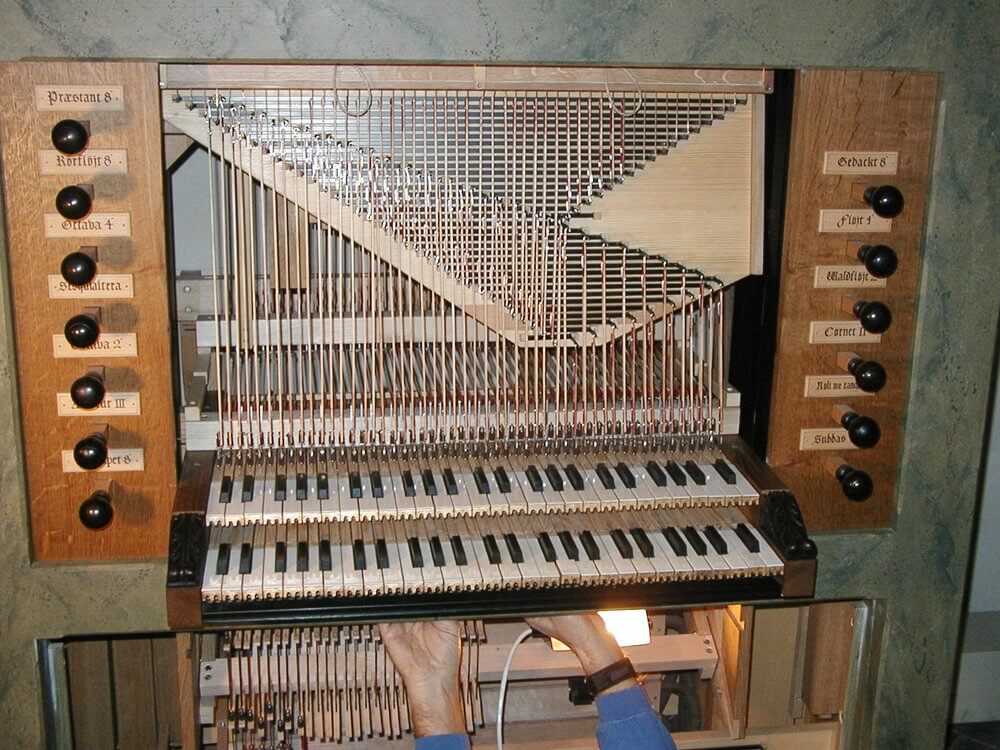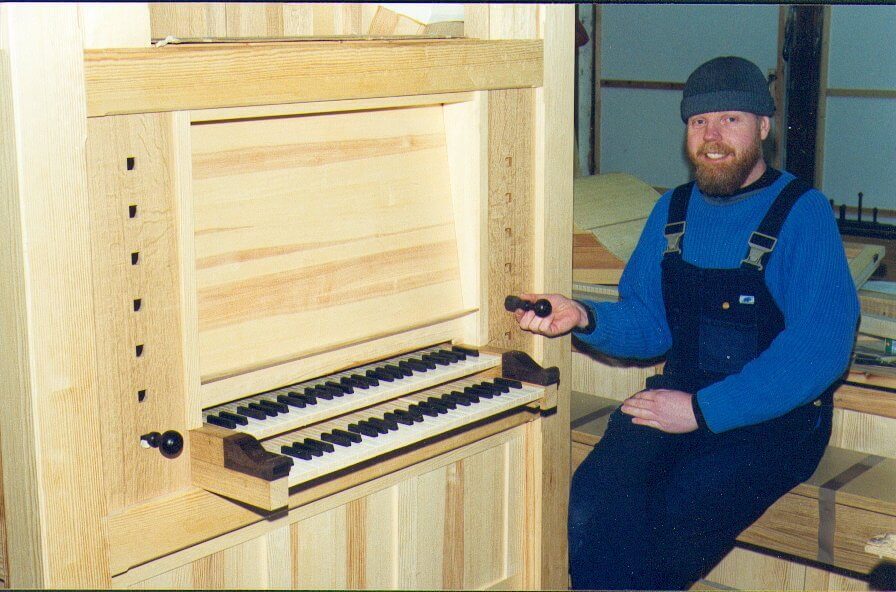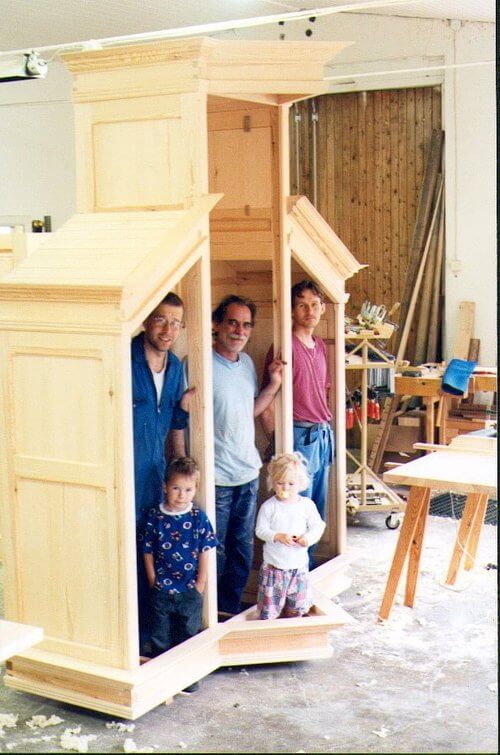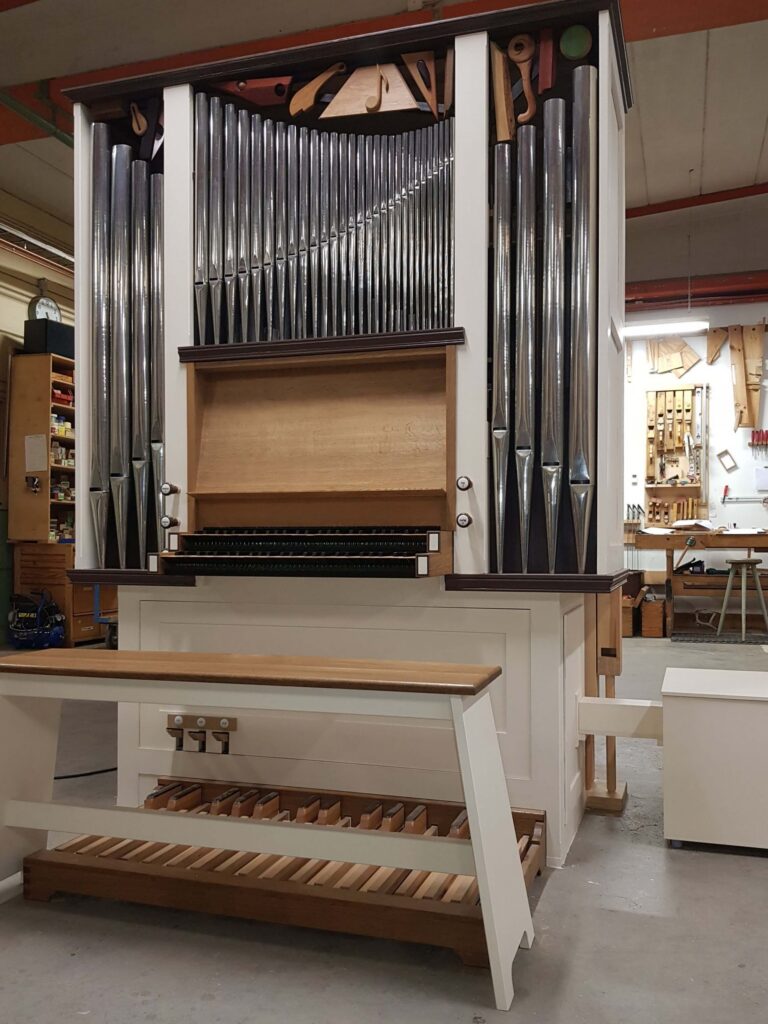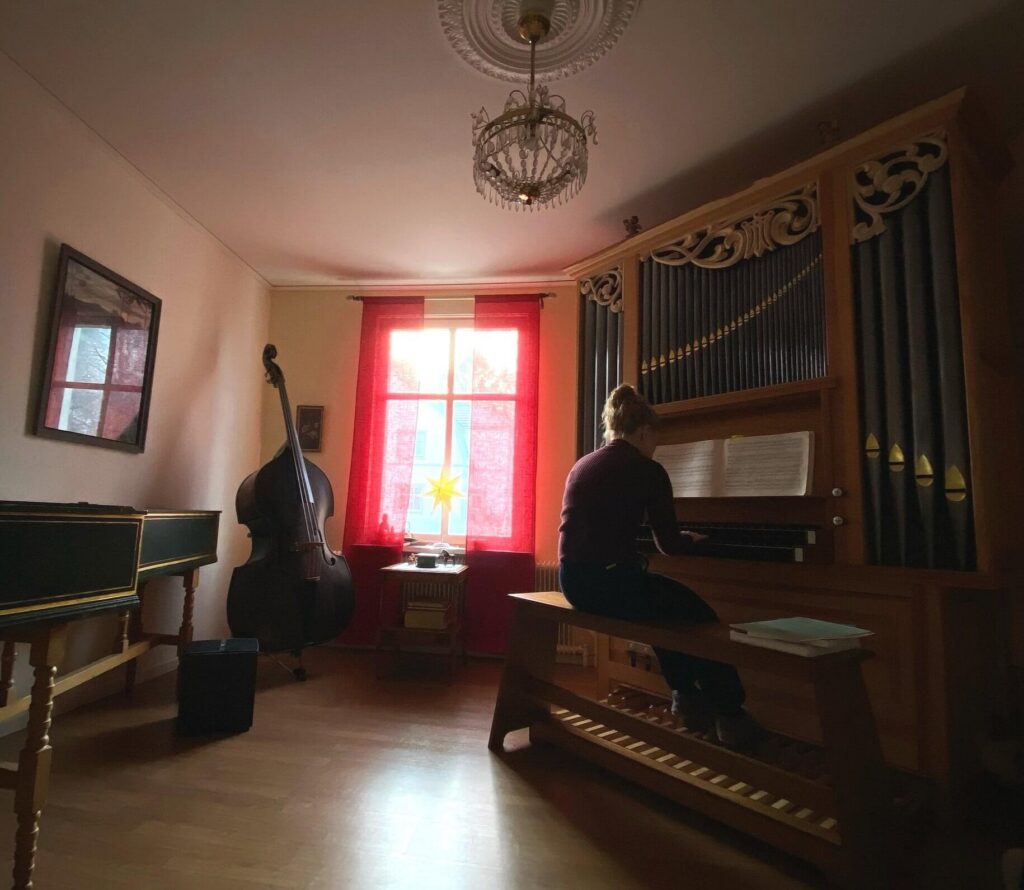Östhammar church, 2000
Description
Östhammar’s new choir organ was commissioned in 1998 and was the first new construction under the new leadership. The congregation wanted an organ that would both lead the congregational singing, accompany the choirs from the choir and function as a solo instrument.
Appearance and design:
- The source of inspiration was the old organ in the church of Östra Ljungby, built in 1707 by Johan Georg Amdor.
- The width of the organ was limited to 2 m due to the distance between the windows.
- The organ is tall and slender, and from the side unobtrusive despite its height of 4.8 m.
- The façade contains pipes from Praestant 8′, D – h; large C is in the tower behind the façade and c¹ – d³ is directly behind the façade in a row of three.
- The depth of the cabinet is 70 cm in the upper cabinet and 60 cm in the lower cabinet. The organ is placed 45 cm from the wall.
- The 16′ sub-bass stands under the tuning slide between the organ case and the wall.
Mechanics:
- Suspended mechanics.
- Mechanical register mechanics.
- Scope: manual C-d³, pedal C-d¹.
Pipework:
- The façade pipes are made of 85% tin.
- The reed flute and trumpet are made of 95% hammered lead, while the other metal parts are made of 75% hand-planed lead.
- The 8′ and 4′ flutes of the breastwork are made of quarter-sawn oak.
- The trumpet has a historical model from Eenum, Holland. The scale is narrow but still sounds good thanks to the wide, lead-coated mouthpieces. In addition to serving as a solo voice, the trumpet blends seamlessly into the tutti sound.
- The pedal sub-base is made of alder.
Air system:
- The air system consists of a large bellows placed in a cabinet to the right of the organ case.
- A small support bellows is located under the main weather box.
- The musical characteristics of the air system give an impression of historical flexibility.
- Air pressure is about 72 mm on water column.
Atmosphere:
- The organ is tuned in Kellner’s “Bach” temperament – a mild, olive temperament that favors the most common keys.
Disposition
Plant
Præstant 8′
Rohrflöte 8′
Octava 4′
Octava 2′
Sesquialtera
Mixtur III
Trumpet 8′
Bröstwerk
Gedackt 8′
Flute 4′
Waldflöte 2′
Cornet II
Pedal
Sub-bass 16′
Paddock
I / P
II / P
“The Östhammar organ is one of the best organs I have come into contact with. Karl Nelson has managed to combine accuracy and aesthetic sense in the craftsmanship with sound art at the highest level, something that does not happen too often. ”
Participants
| Name | Responsibility |
|---|---|
| Mouafak Failli | Organ case carpentry, air system, pedal keyboard |
| Karl Nelson | Projecting, metal and wooden pipes, intonation |
| Gabriel Nordangård | Sub-bass, mechanics |
| Johan Sköld | Weather boxes, keyboards, mechanics, assembly |
| Peter Ardstål | Game mechanics |
| Johan Gustafsson | Register signs |
| Francis James | Game mechanics |
| Bengt Tribukait | Intonation |
| Tomas Öjersson | Welding |
| Sven-Olof Carlsson | Coloring and gilding |
| Suzanne Sundström | Ornament |
| David Aurelius | organist |
| Siri Eriksson | President of the Council of Churches |
| Hans Hellsten | Inspector |
